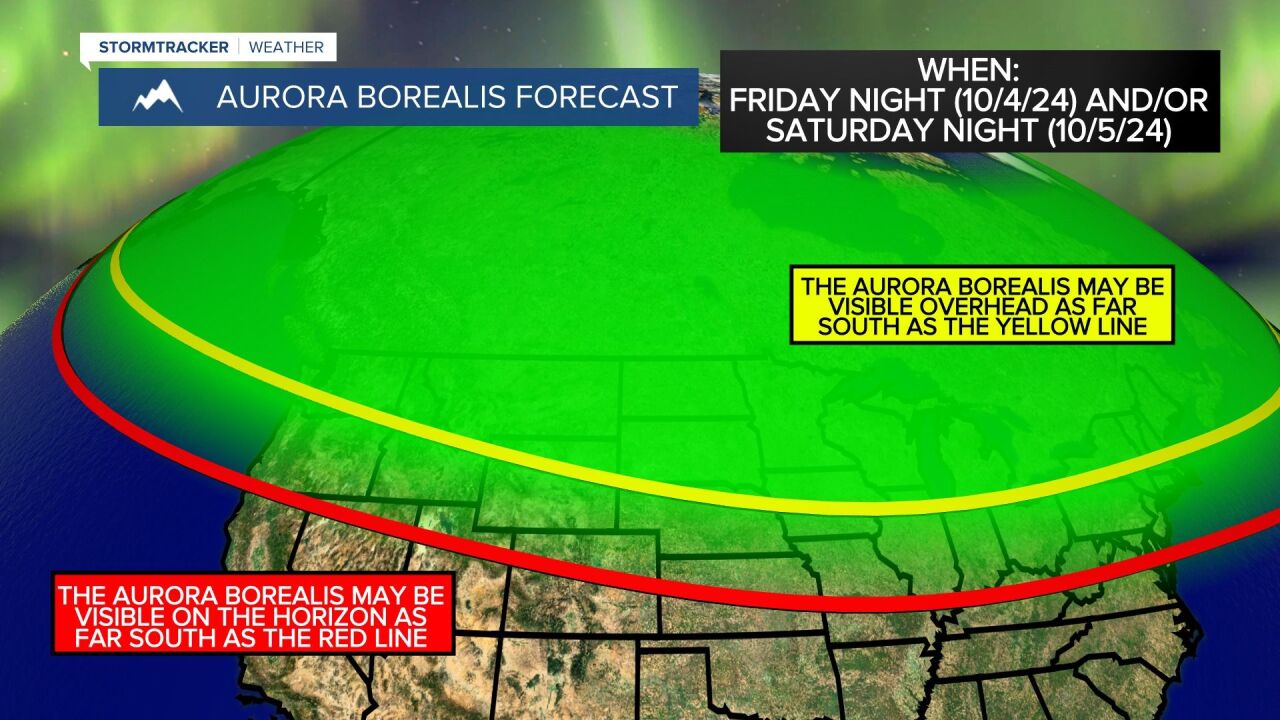GREAT FALLS — It is never a guarantee, but we do have a chance to see the Aurora Borealis in the northern tier of the U.S., including most of Montana, on Friday night and Saturday night.
The Space Weather Predication Center has issued G3 (Strong) Geomagnetic Storm Watches for October 4-6 due to a pair of coronal mass ejections that are expected to arrive this weekend.
There will be some clouds around for the early part of Friday night across parts of Montana, but it will be mostly clear Saturday night.
In order to get the best viewing, make sure you are as far away from city lights as possible.
Two resources for knowing when the Aurora Borealis might be visible in our area are the Space Weather Prediction Center and Soft Serve News.
(FEBRUARY 2023) The Aurora Borealis is a mesmerizing display of dancing lights in the sky. What causes this mesmerizing natural phenomenon?
It starts with the sun. The Earth is surrounded by magnetic fields. During solar storms, large masses of charged particles, or protons and electrons, are forced towards the Earth at speeds of 250 to 500 miles per second by the solar wind.
Generally, the particles are directed towards the area with the greatest magnetic activity, the poles. Upon reach the North or South Pole, these particles interact with atmospheric gases, mostly oxygen and nitrogen. The collisions between the two cause heat, which is released in the form of light.
The color visible depends on the height of the collision. Higher altitude oxygen created a red hue, while green hues are indicative of lower altitude oxygen molecules. Pink and blue hues correlate to nitrogen molecules, the most abundant gas in the atmosphere.
In order for the Northern Lights to be visible at mid-latitudes such as Montana, the solar storm needs to be particularly intense. Brightness is directly related to the solar storm's strength. The planetary K index (Kp) is the most accurate scale for geomagnetic activity. The Kp index goes from 1 (dim, visible only near the poles) to 9 (very bright, visible overhead in northern U.S. states). A Kp of 5 is generally seen as the threshold for a solar storm and that is when the Northern Lights are usually visible near the Canadian border.
Prime viewing for the Aurora Borealis is during the wintertime months due to the lack of daylight hours, however it can technically be viewed anytime of the year. A full moon or city lights can prohibit the brightness of the Northern Lights.


